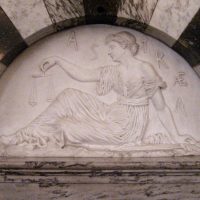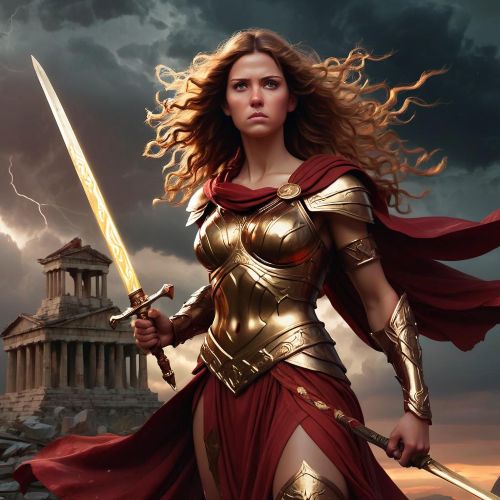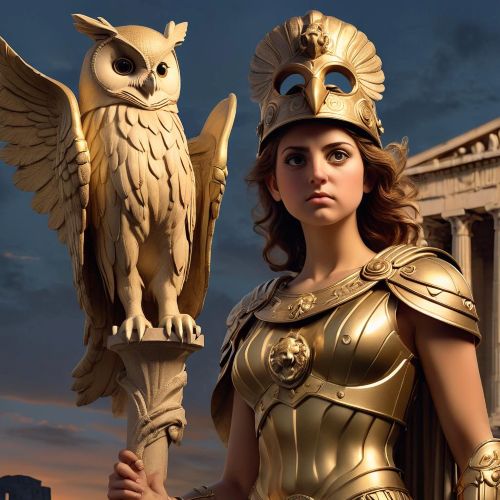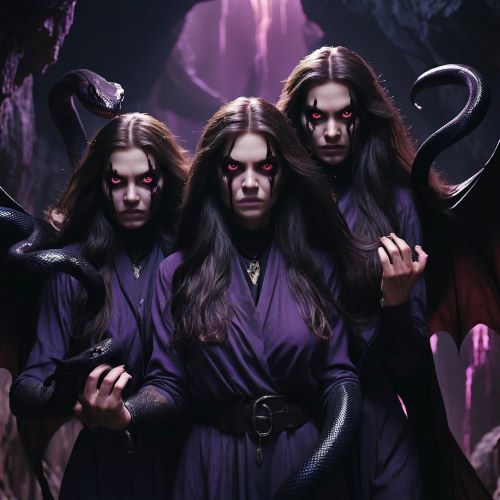Astraea : Goddess of Justice
Listen
At a glance
| Description | |
|---|---|
| Origin | Greek Mythology |
| Classification | Gods |
| Family Members | Astraeus (Father), Eos (Mother) |
| Region | Greece |
| Associated With | Justice, Innocence, Viginity |
Astraea
Introduction
Astraea (Ancient Greek: Ἀστραία, Astraía) is a goddess in Greek mythology deeply associated with justice, purity, and innocence. Often called the star-maiden, she is best known for being the last immortal to walk the earth during the Golden Age, after which she withdrew due to the rise of wickedness and human corruption. Her myth bridges the divine and human worlds: Astraea’s presence among mortals symbolised a time of harmony, virtue, and moral order; her departure marks both loss and hope for restoration. She is closely linked with Dike, the goddess of justice, and in some accounts conflated with her. Greek and Roman poets and later writers used Astraea as a symbol of the ideal justice and as a hopeful figure for a return to an age of purity when humanity would once again live rightly.
Physical Traits
Classical mythology does not provide detailed anthropometric descriptions (height, weight, etc.) for Astraea; rather, her physical portrayal is symbolic. She is almost always depicted as a young maiden, radiantly beautiful, with an aura of chastity and innocence. In art she often appears with wings, a flaming torch or flame-halo (aureole), and occasionally a sword. She carries or holds the scales of justice, underscoring her role as moral arbiter. She is sometimes shown with a burning torch to illuminate the darkness of injustice. Her “starry” nature is emphasised: she is connected with stars, sometimes having a shining halo or surrounded by celestial light. After her departure from earth, myth says that she becomes the constellation Virgo, positioning her among the stars.
Family
Astraea’s genealogy varies depending on source and tradition. In many classical sources she is described as the daughter of Astraeus, the Titan of dusk, and Eos, the Titaness of dawn. This parentage associates her with celestial and transitional times of day.In other accounts, when she is conflated or identified with Dike, she is treated as the daughter of Zeus and Themis, which aligns her with personifications of law and divine order. She is often paired or associated with Dike as a companion figure; in some sources they are essentially the same or overlapping.In some late Roman and Renaissance sources, she is said to have a sister called Pudicitia (Roman personification of modesty or chastity, related to the Greek Aidos).
Other names
Astraea is known by several names and epithets across Greek and Roman traditions, reflecting her role as a goddess whose identity often overlaps with other divine figures. The original Greek form of her name is Astraia, derived from astēr, meaning “star.” In Roman and later adaptations her name was Latinised into variations such as Astrea and Astria, which are also found in English texts. She is often called the “Star-Maiden” or “Star Goddess,” a poetic reference to her celestial nature and her eventual place among the constellations. When Astraea is identified with or closely linked to Dike, the goddess of justice, she is sometimes referred to as “Justice” or “Justice Maiden,” titles that highlight her role as the divine arbiter of fairness. Following her departure from earth, she is also permanently associated with the constellation Virgo, an identity that immortalises her myth in the night sky.
Powers and Abilities
Astraea’s “powers” are not like those of warrior gods; they are moral, symbolic, and cosmic. Her ability lies in representing and inspiring justice, integrity, and purity. During the mythic Golden Age, she lived among humans and upheld a kind of divine moral standard, influencing mortals by her very presence. As the ages worsened (Silver, Bronze, Iron in Greek myth), she grew disillusioned with human corruption and eventually removed herself from earthly affairs.
Another major “ability” is her transformation into the stars: she is said to have been placed by Zeus among the constellations—specifically Virgo—so that her absence would still have cosmic meaning, a reminder of the moral ideals once present, and possibly a hope that they might return. Her connection to the scales of justice is also significant; in some depictions she uses scales to weigh human deeds, symbolising impartiality and divine judgement.
Modern Day Influence
Astraea’s myth has persisted in literature, art, astronomy, and political symbolism. In Western literature she appears in works by Hesiod, Ovid, and Virgil, often as a prophetic or ideal figure whose return might signal renewal of virtue. During the Renaissance and later periods, writers and poets used Astraea as an allegory for justice, virtue, or the hope of a renewed Golden Age. One famous example is Dryden’s Astraea Redux (1660), which expressed hopes for a restored golden age under a just ruler.
In the visual arts she has been featured in paintings and engravings; for example, works titled Astraea Returns to Earth (The Apotheosis of Charles II) depict her as returning to restore order and virtue. Astronomically, name-associations endure: the constellation Virgo is often interpreted in popular culture as representing Astraea. There is also an asteroid named 5 Astraea in the main belt, named after her. In modern discussions of justice, fairness, and political idealism, Astraea is sometimes invoked as a symbol or metaphor for ethical renewal or societal decline and hope.
Related Images
Source
Lanoue, S. (2024, February 1). The Mythical Astraea: Exploring the Greek Goddess of Justice. Of One Tree. https://ofonetree.com/the-mythical-astraea-exploring-the-greek-goddess-of-justice/
Ferris, C. (n.d.). Astraea: Greek Goddess Of Justice, Innocence, And The Stars. Mystery in History. https://mysteryinhistory.com/astraea/
Symbol Genie. (n.d.). Astraea Greek Goddess: Symbolism and Mythology Explained. https://symbolgenie.com/astraea-greek-goddess-symbolism/
Cierra Tolentino. (2024). Astraea Goddess: The Greek Goddess of Justice and Innocence. https://historycooperative.org/astraea-goddess/
Frequently Asked Questions
What is lorem Ipsum?
I am text block. Click edit button to change this text. Lorem ipsum dolor sit amet, consectetur adipiscing elit. Ut elit tellus, luctus nec ullamcorper mattis, pulvinar dapibus leo.
What is lorem Ipsum?
I am text block. Click edit button to change this text. Lorem ipsum dolor sit amet, consectetur adipiscing elit. Ut elit tellus, luctus nec ullamcorper mattis, pulvinar dapibus leo.
What is lorem Ipsum?
I am text block. Click edit button to change this text. Lorem ipsum dolor sit amet, consectetur adipiscing elit. Ut elit tellus, luctus nec ullamcorper mattis, pulvinar dapibus leo.
What is lorem Ipsum?
I am text block. Click edit button to change this text. Lorem ipsum dolor sit amet, consectetur adipiscing elit. Ut elit tellus, luctus nec ullamcorper mattis, pulvinar dapibus leo.
What is lorem Ipsum?
I am text block. Click edit button to change this text. Lorem ipsum dolor sit amet, consectetur adipiscing elit. Ut elit tellus, luctus nec ullamcorper mattis, pulvinar dapibus leo.














